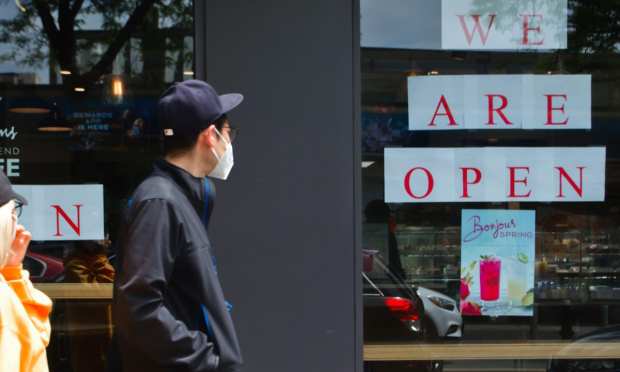SMB Hiring Headaches Crimp Confidence, Offset Gains From Tech And Digitization

The hassle of hiring new workers has stalled a year-long advance in small business confidence, new data shows, casting a cloud of doubt over one of the economic recovery’s most important drivers. According to a new study out from the National Federation of Independent Businesses (NFIB), a record 48 percent of small- to midsized businesses (SMBs) reported needing more hired help as the COVID-19 reopening carries on and the world attempts to go back to something like normal.
“The labor shortage is holding back growth for small businesses across the country,” NFIB Chief Economist Bill Dunkelberg noted, adding that small businesses would see more sales and get closer to pre-pandemic levels if there were enough people to handle the needs of customers.
The drop in SMBs’ confidence triggered a decline of 0.2 points in May to 99.6 in the NFIB Small Business Optimism Index.
The move marks a shift in attitude from American SMB owners, whose optimism has been on a consistent incline in 2021, according to NFIB figures, until May’s dip came along and broke the streak. SMB owners reopening are encountering labor shortages as they attempt to reopen — in some segments, like restaurants where the unemployment rate is at 9 percent, those shortages are incredibly severe.
So how worried about the optimism blip ought one be?
The Upward Trajectory In SMB confidence
PYMNTS recent SMB survey, After Vaccines: What Mass Vaccinations Mean for Main Street Merchants, saw the same optimism trend that has been on display in other 2021 data. The study found that SMBs remain a doggedly optimistic group, confident that economic activity will rebound fairly soon — with the majority citing October as the realistic timeline for the resumption of normal activity. One in four merchants surveyed reports that their communities’ economic environments are already back to pre-pandemic levels.
Moreover, PYMNTS data demonstrates that optimism for the future is translating to investment in their businesses now. Eighty-eight percent of SMB owners favor investment in innovation, particularly in the areas one would expect after 15 months of a global pandemic: touchless experiences (70 percent of SMBs), enhanced larger product offerings (56 percent) and digital transaction support (50 percent).
And those SMBs are confident those investments are going to pay off, with two-thirds that saw decreased revenues in 2020 reporting they believe things will change for the better this year.
Clearing The Hurdles
PYMNTS data also indicates that SMB confidence is not without some caveats coming out of the pandemic. Urban SMBs are more confident than their rural counterparts — 78 percent of metropolitan Main Street SMBs expect vaccination efforts to successfully control the virus’s spread. In comparison, only 41 percent of rural SMB owners feel the same way.
But managing employees has continued to be a tricky situation for SMBs throughout the pandemic. A previous PYMNTS merchant survey demonstrated that a share of SMBs looking to preserve and protect their cash flows moved to cut staff and reduce their hours as means to do it, with 18 percent of Main Street Survivor business owners reporting they had cut their full-time staff and 15 percent reporting lowering worker salaries. Cuts made in the name of necessity that now, it seems, are acting as a bit of weight on recovery.
A weight showing up in the NFIB data in the form of slightly dimmed optimism. Is it enough to worry about a reversal in the reopening? No, not yet — particularly given how optimistic merchants seem to be on the subject of the next six months, according to PYMNTs data. But a blip worth watching as SMB owners attempt to keep a lot of plates spinning in the air on the road to recovery.
